Ebecho Muslimova: TRAPS!
Fatebe is Ebecho Muslimova’s anxiety transcribed into the “structure of a joke.” The cartoon’s increasingly physical comedy tableaux are divided into three scenarios: the set-up, the punchline, and the expectation of surprise. Unlike other Fifth Wave icons, Fatebe’s body is all she is, everything she has to say comes from a figurative gesture. Muslimova’s second show with Magenta Plains, titled TRAPS!, is a continuation of Fatebe’s outrageous circumstances with a stoic twist.
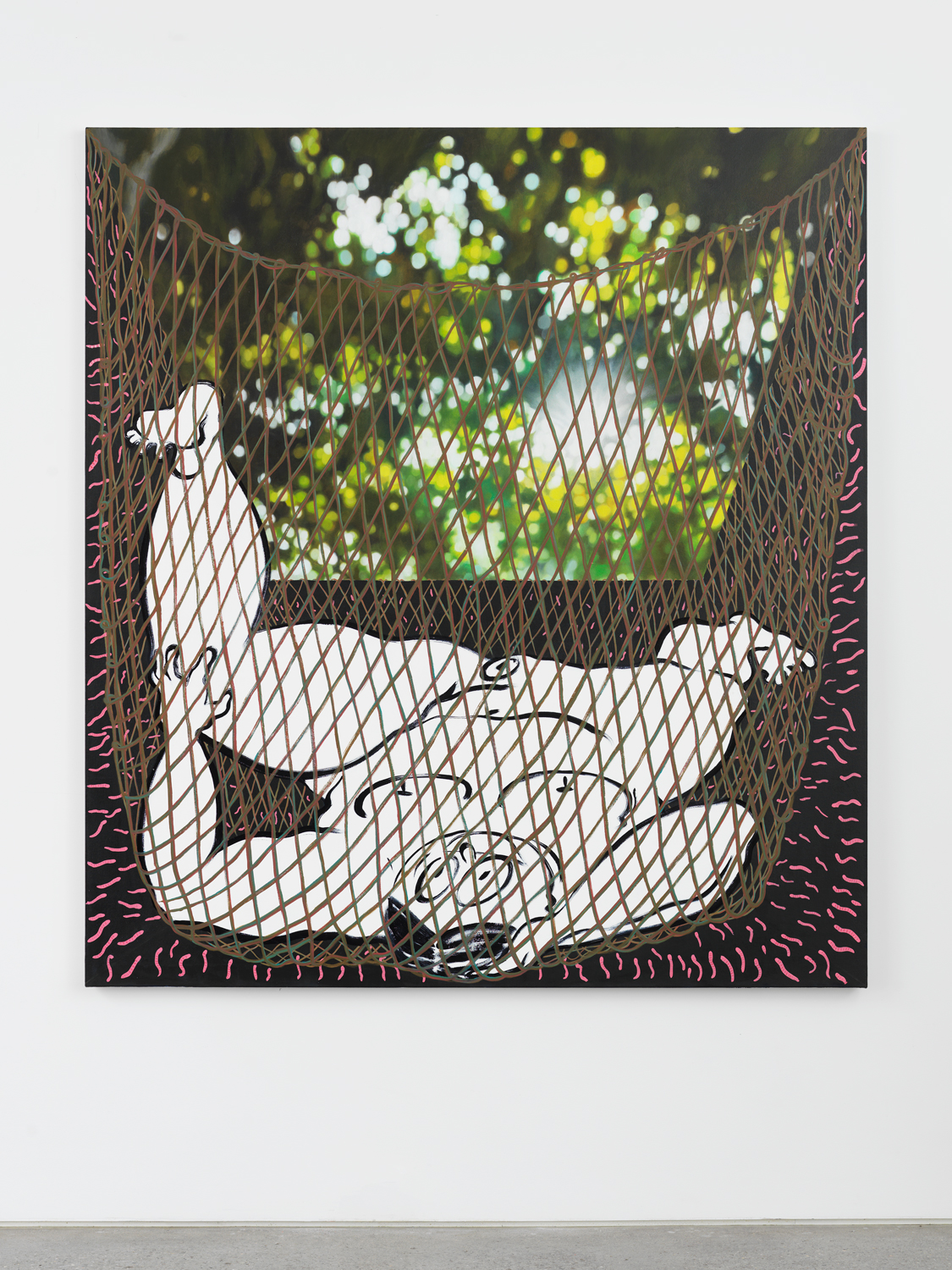
As a general rule in Muslimova’s practice, Fatebe is an open book. There are no secrets, no divisions, no rifts—everything in her storyline is exposed. We know there is no shame in her failures, and whether she intended to fail or not doesn’t matter. Fatebe’s concern seems to be not that the event has happened but that she let it happen. In December 2019, the artist explained this to me, “Fatebe doesn’t speak—her gestures and her body are her language. I think of her as being more like a self-portrait, but not me—like I’m rendering a different self, but she’s a friend. My anxiety gets resolved by making a Fatebe that’s satisfying to me.”
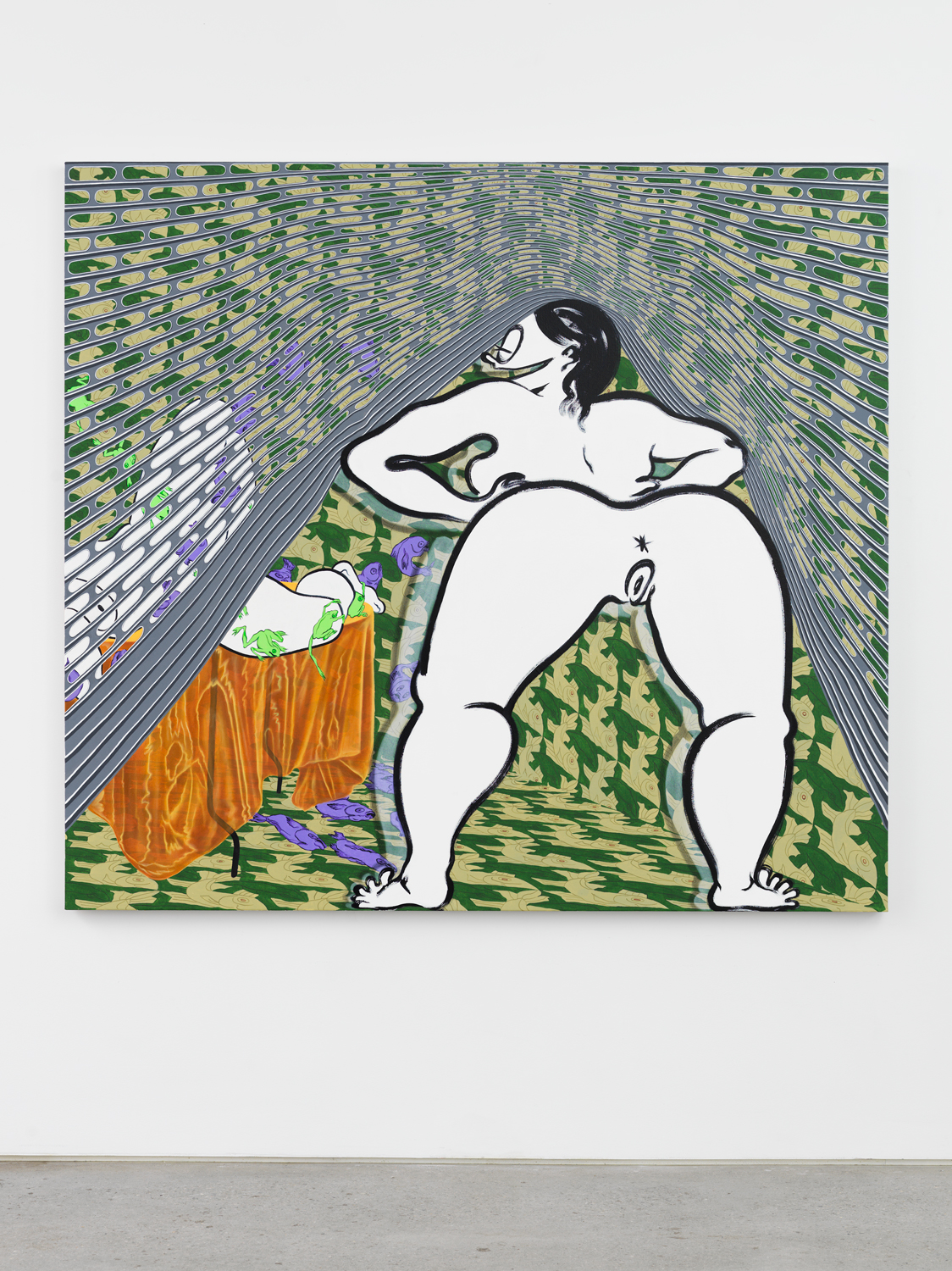
In TRAPS!, our heroine is faced with new objects, environments, and landscapes, coupled with new temptations, anxieties, and challenges. In Muslimova’s new series of psychedelic and not-so-joyful tableaux, Fatebe seems to be in a heightened mental state. Forever in the nude, Fatebe’s “statement” is not necessarily political but of a more personal nature. One excellent example of this heightened state is Fatebe as seen in Fatebe Lightning in the Mezzanine, with her head tilted to the back of an armchair, hands on her knees, and her vagina wide open and confronting the viewer, while a lightning bolt bursts somewhere nearby. She carelessly looks up in the sky—almost as if she is enjoying the potential danger of the situation.
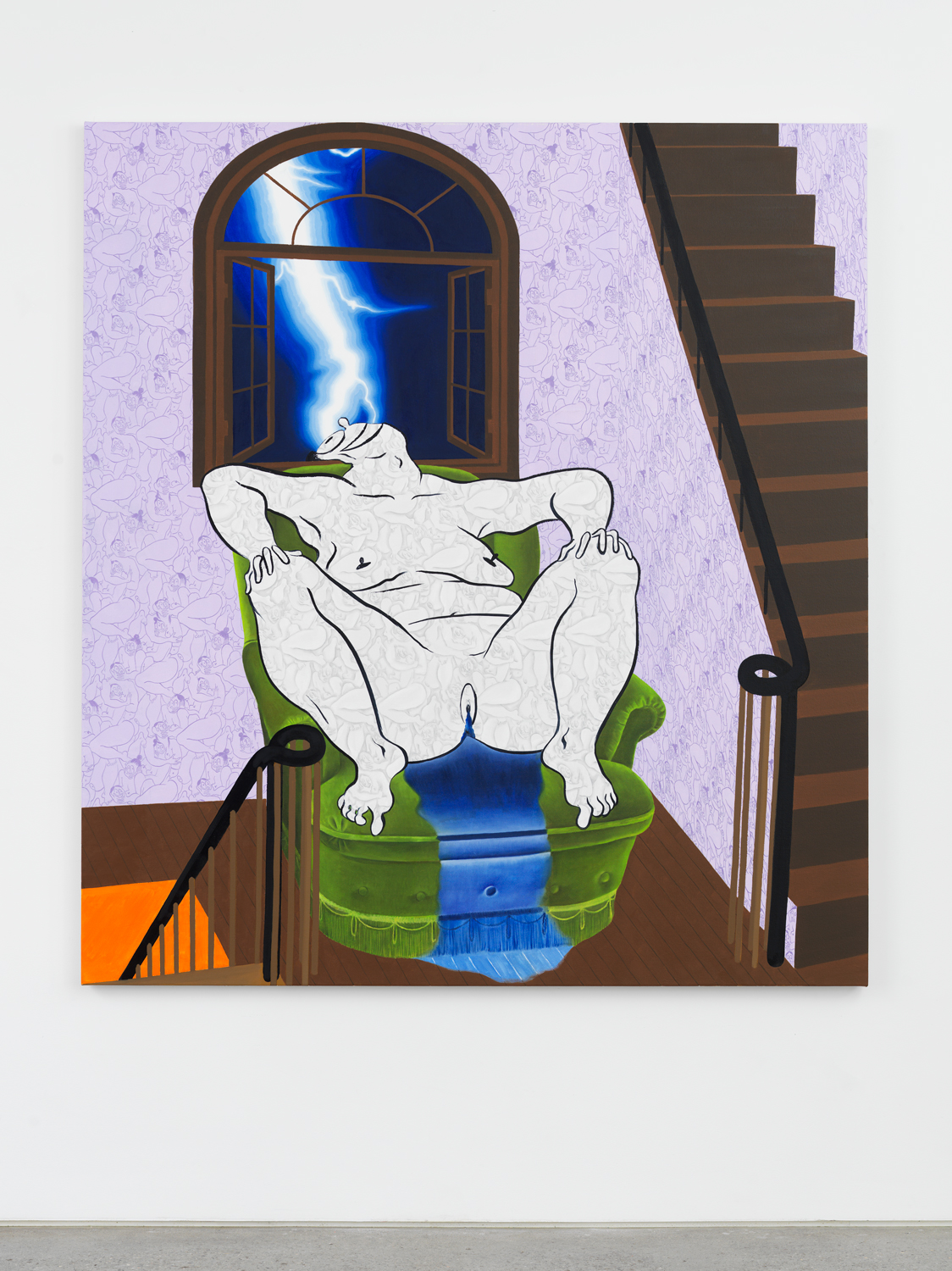
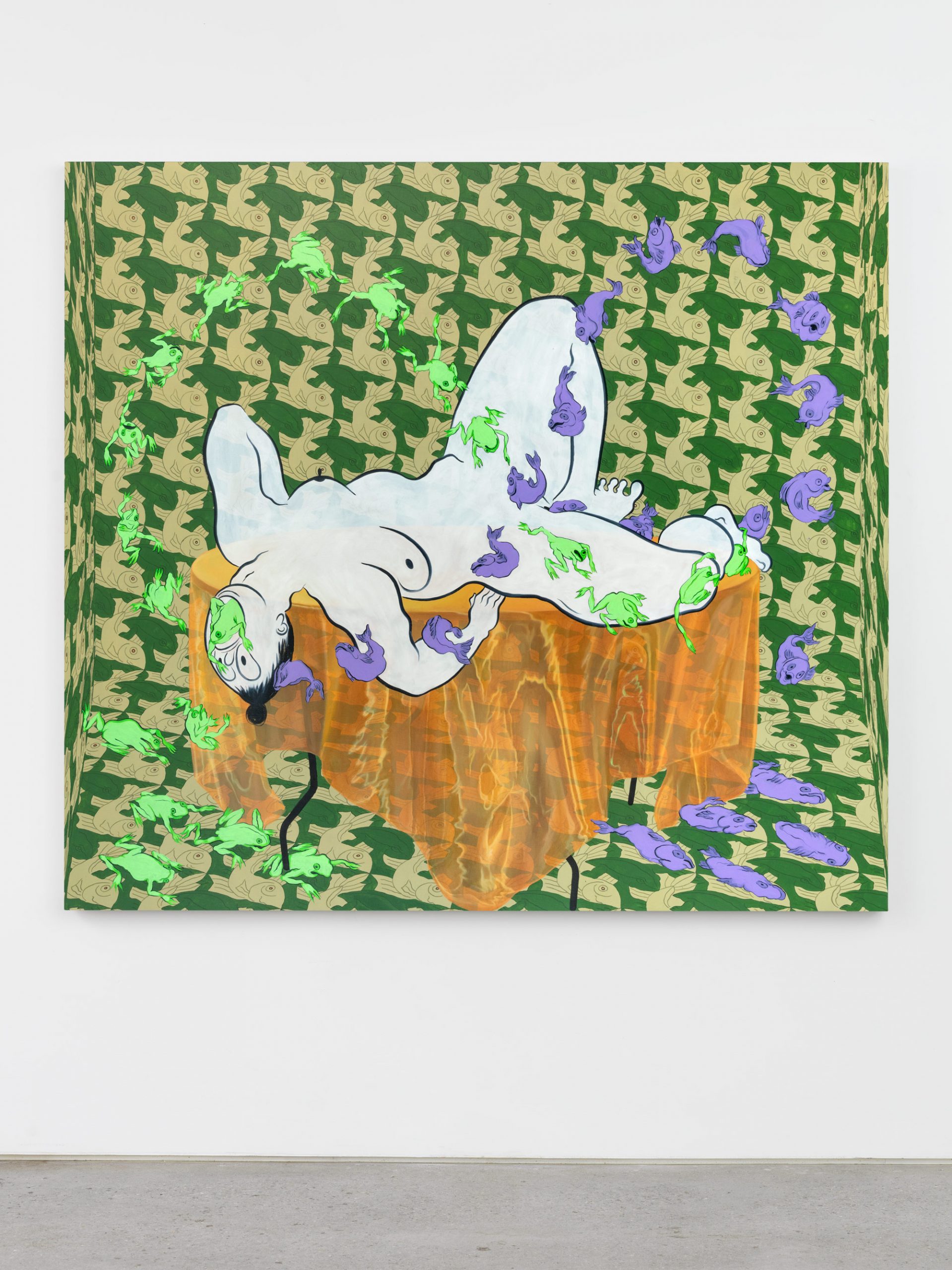
In Fatebe Net, our friend is stuck in a net with no apparent intention of escape. Her joyful smile is gone, but the backdrop is unnervingly tranquil, and she is back on the ground. For Fatebe, there are no resolutions. TRAPS! marks a transitional state for the artist and her doppelgänger, as in the past, Fatebe refused to die and kept us craving for more. Now, Fatebe is stoic, ready to test this “new thing” as if this kind of failure is also an adventure worth trying out. This evolution feels natural and reiterates the larger narrative that there are no limits for Fatebe.
Muslimova’s work from 2016 and 2017 had a sense of absurd joy. “It is all about her first times,” explained Muslimova. Whether it was her first time immersing herself in a Spanish dance in Fatebe Flamenco or her first time trying to figure out the mechanics and purpose of a washing machine in Wash and Dry, Fatebe seemed to be energized and in high spirits no matter her circumstance or challenge. She was enduring a myriad of subversive and sometimes immoral and degrading acts with a child-like, over-the-top-happy smile on her face, as seen in Untitled — Fatebe’s face, which is very different than the Fatebe in TRAPS!, we now have confronting us.
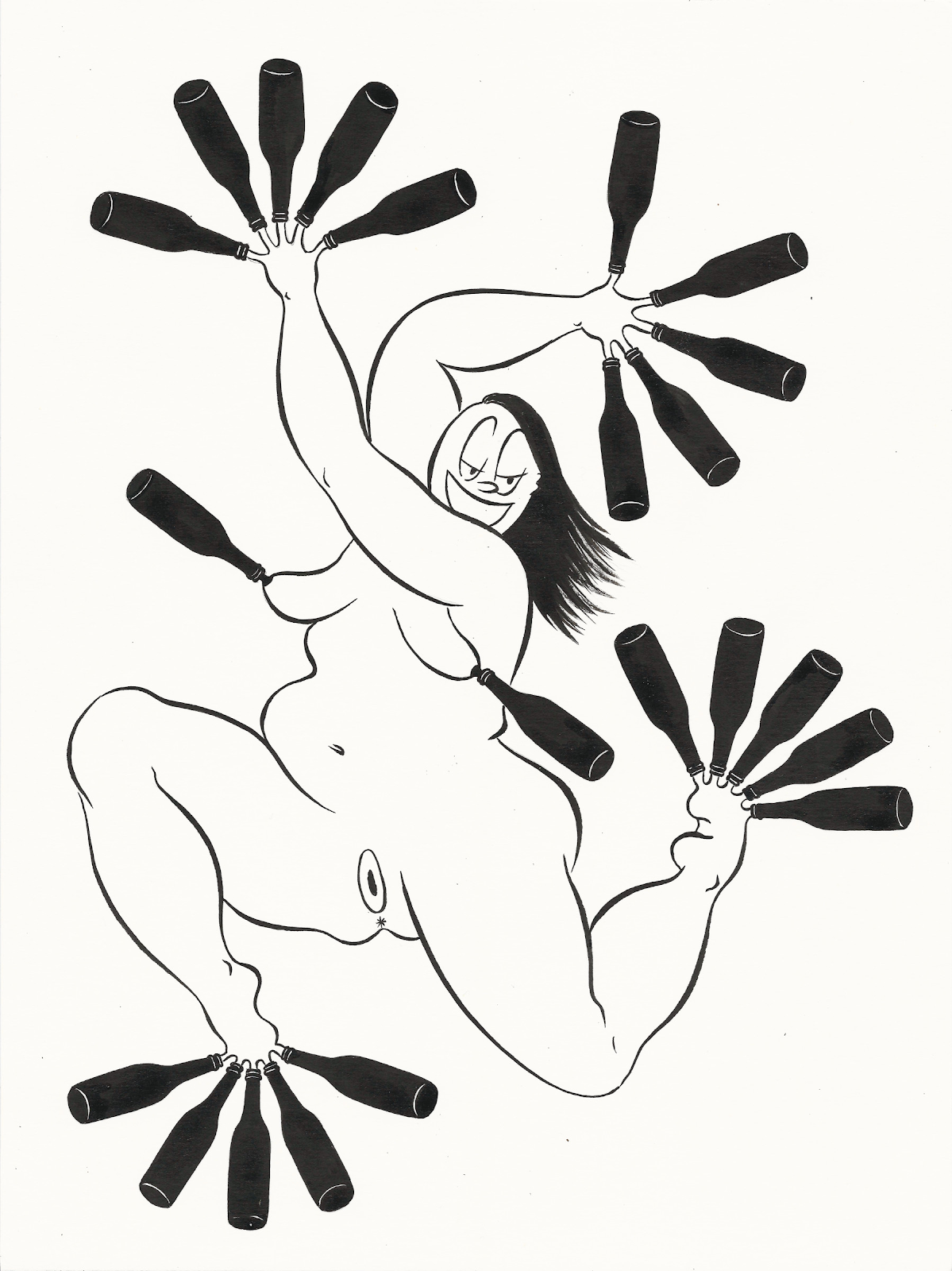
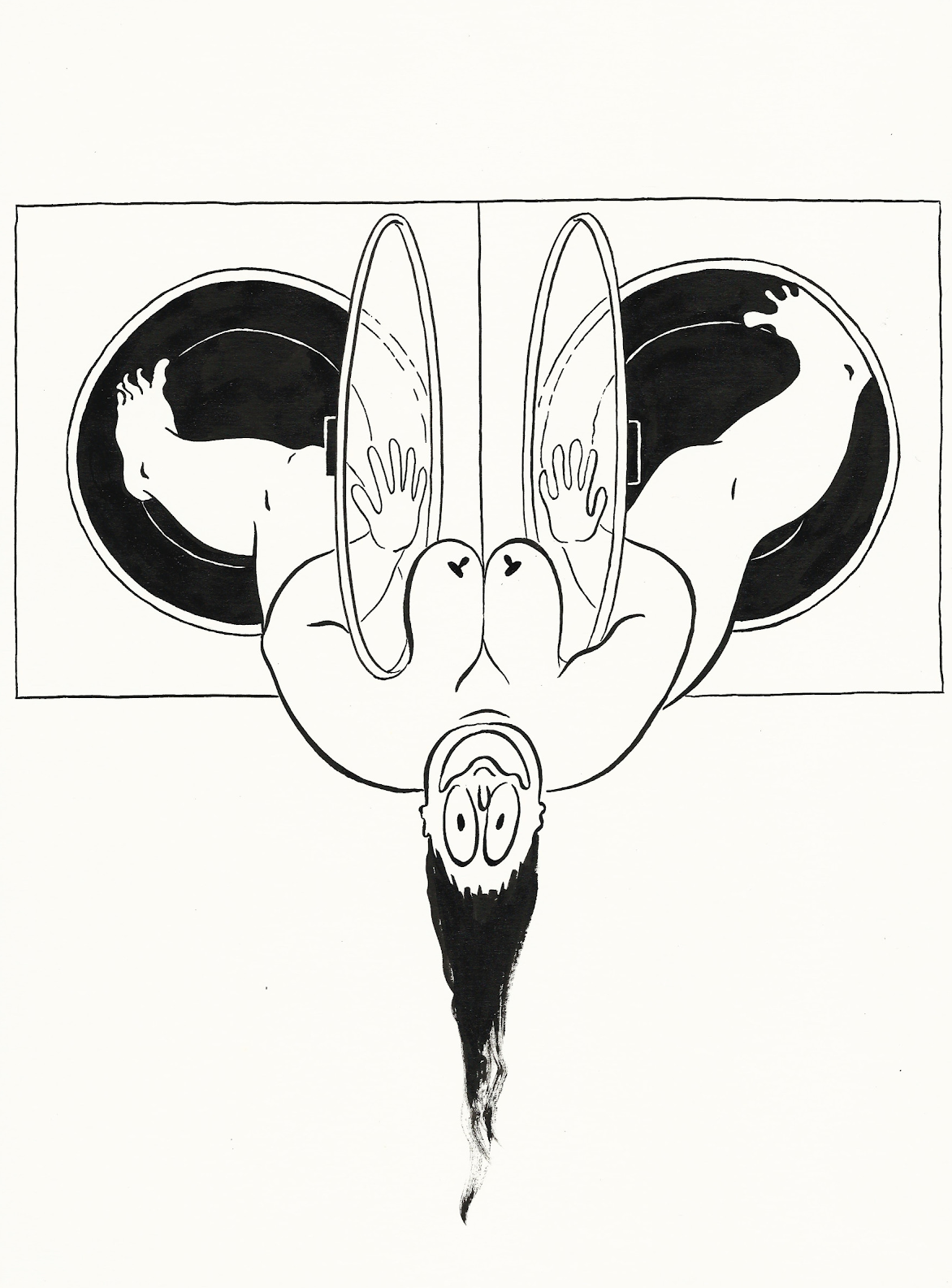
In 2016, Muslimova stated that “Fatebe only exists in drawing” but now, Fatebe seems to have successfully overpowered that medium and has made a mature move to oil painting.
For TRAPS!, large oil canvases have taken over the gallery space with striking colors that seem to be a new dimension of Fatebe’s universe. Muslimova picked up oil as “an excuse to paint and experiment with new textures.” The new textures and different spatial environments of the brightly colored oil paintings help Fatebe redefine herself, no longer being a flat line on a white surface. She is becoming more real as if she is “redefining her own flatness through color and dimension.” The stillness of an oil painting versus a drawing has undoubtedly seeped into Fatebe’s psyche, and she has become more stoic even when caught in a trap.
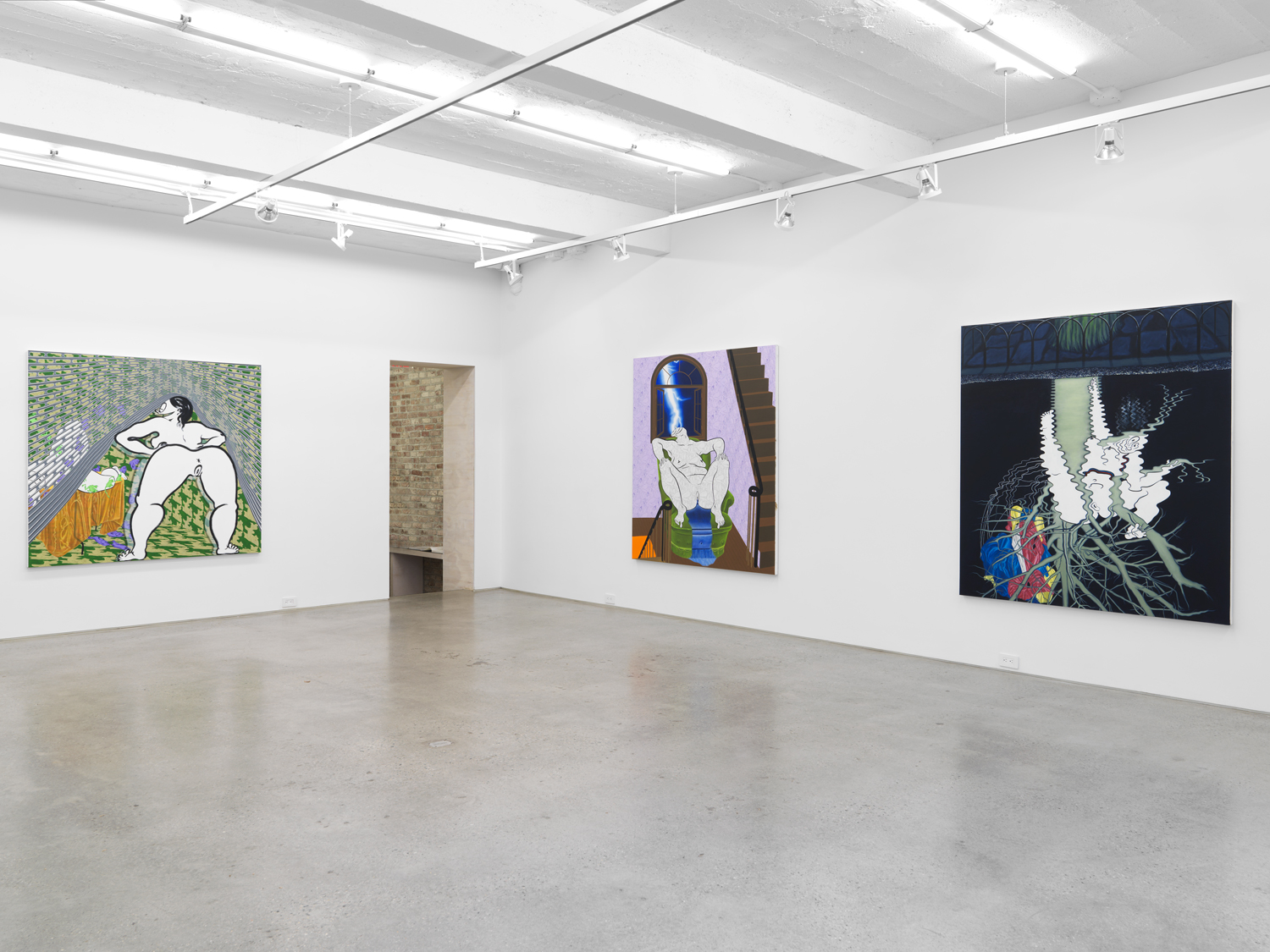
When asked who Fatebe is to her, Muslimova stated, “She is a surrogate body—a fantasy of me as a person … of my anxieties, depression, pain. I can’t fall into a hole and stay there—that’s not how we function in reality. We climb as fast as possible. We try to. But she gets to lay down and explore it all.” According to the ethics of Fatebe, each failure is an opportunity to start over. As an alter ego of the artist, Fatebe is nothing if not a utopia.
Meri Simonyan is an Armenian curator and writer living in New York.